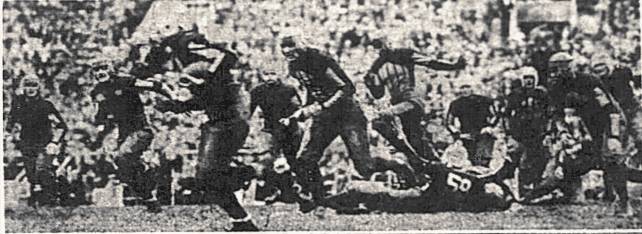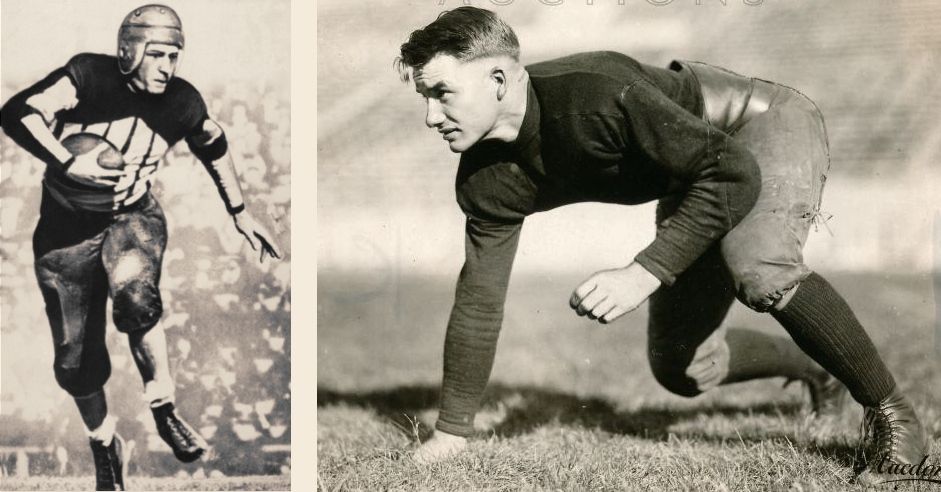Nebraska 14Illinois 0
| 1st | 2nd | 3rd | 4th | F | ||
| Nebraska | 7 | 0 | 0 | 7 | 14 | |
| Illinois | 0 | 0 | 0 | 0 | 0 |
First quarter
NU - Frank Dailey, 40 yard interception
return (John Brown kick)
Fourth quarter
NU - John Rhodes 2 run (John Brown kick)
NEB ILL
First downs ................. 4 8
Total offense ............. 116 151
Rushing yards ............. 116 110
Passing yards ............... 0 41
Comp-Att-Int .......... 0-2-1 5-18-3
Punts-avg. yards ...... 11-39.7 10-39.5
Yards penalized ............ 30 15
Illinois (0) Nebraska (14)
Muhl .......... Left end ........ Sprague
Grable ....... Left tackle ...E. Weir (C)
Wickhorst ..... Left guard ........ Raish
Mittenwallner ... Center ..... Hutchinson
Muegge ....... Right guard ....... Scholz
Reeder ....... Right tackle ...... Stiner
Kassell ....... Right end ....... J. Weir
Gallivan ..... Quarterback ........ Brown
Grange (C) .. Left halfback ...... Rhodes
Leonard ..... Right halfback.. A. Mandery
Daugherty ...... Fullback ........ Dailey
Officials: Referee, Eckersall, Chicago;
umpire, Schommer, Chicago; field judge,
Mumma, Army; head linesman, Wyatt, Missouri
Time of periods: 15 minutes each.
Substitutions: Nebraska-Lawson for
Sprague, Wostoupal for Hutchison, Pospisil
for Raish, Stephens for Dailey, Shaner for
J.Weir, Hutchison for Wostoupal, Raish
for Pospisil, Sprague for Lawson, J.Weir
for Shaner, Dover for J. Weir, McIntyre
for Sprague, R.Mandery for Stiner, Randels
for R.Mandery, Hecht for Rhodes, Locke for
Brown, Mielenz for Stephens, Presnell for
A.Mandery, Kriemelmeyer for Raish.
Illinois-Britton for Muegge, Hall for
Gallivan, Smith for Muhl, Reitsch for
Mittenwallner, Green for Leonard, Stewart
for Grange, Cooledge for Wickhorst, Great-
house for Daugherty, Squires for Kassel.

Frank Dailey heads for the goal line with his first-quarter interception.
